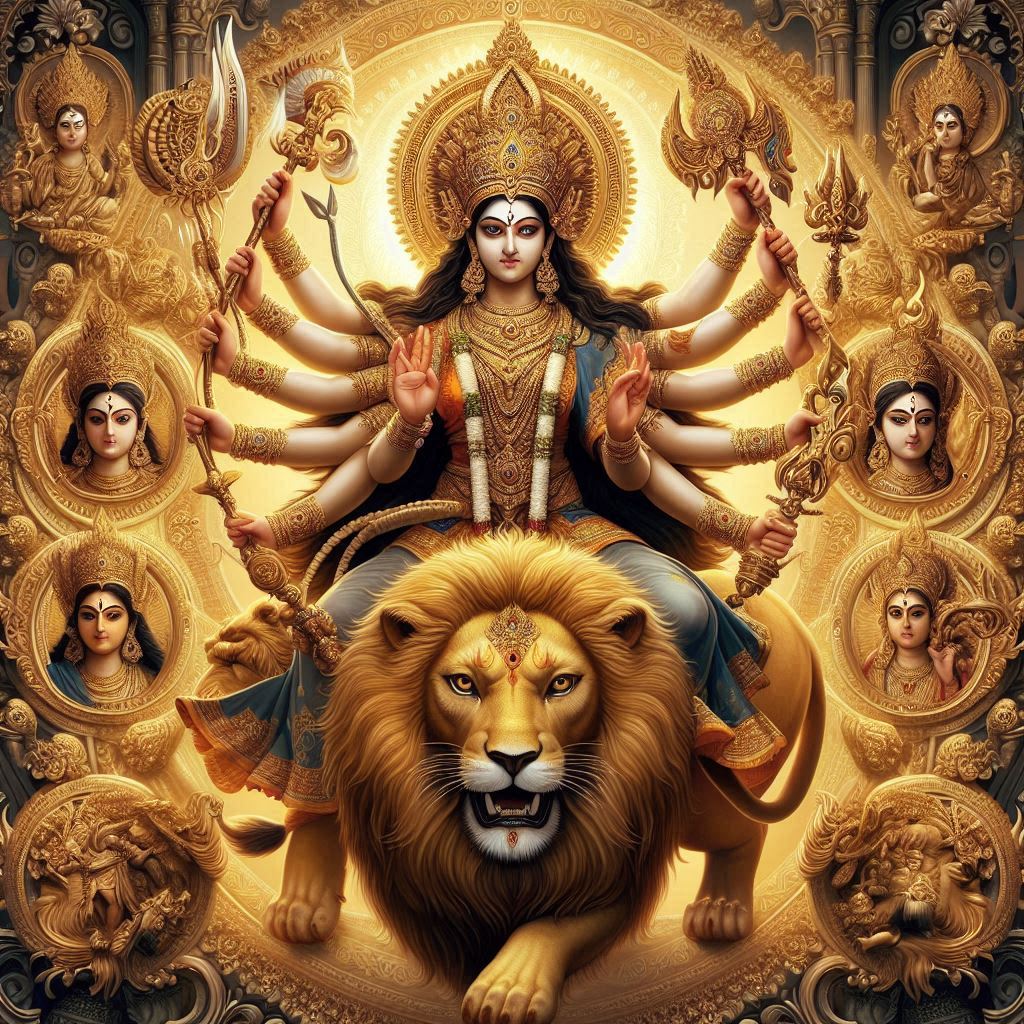Durga Puja Calendar in 2024: As per the Hindu lunar calendar, Durga Puja falls in the month of Ashvin. It will be observed from October 9 to October 12, 2024. That’s all there is to it. Date of Durga Calendar Puja in in 2024: As per the Hindu lunar calendar, Durga Puja falls in the month of Ashvin. It will be observed from October 9 to October 12, 2024. That’s all there is to it.
Date of Durga Puja in 2024: Known also as Durgotsava, Durga Puja is a significant Hindu holiday that is mostly observed by the Bengali community in the Indian states of West Bengal, Bihar, Assam, Odisha, Jharkhand, and Tripura, as well as the diaspora from these regions.
It’s a four-day festival held on the final five days of the nine-day Navratri festival, honouring the goddess Durga, who is thought to have come to Earth to fight the buffalo monster Mahishasura, symbolising the triumph of good over evil.
The celebration signifies the return of the goddess Durga with her offspring and her triumph over Mahishasura. Discover more about Durga Puja 2024 by exploring.
When is the 2024 Durga Puja? The Date and Time
Durga Puja is normally celebrated from the sixth to the tenth day of the brilliant lunar fortnight in the Hindu lunar calendar month of Ashvin. It is usually observed in September or October.
It is observed in conjunction with the nine-day festival of Navratri. But it lasts for five days, the most important and popular being Shashthi, Saptami, Ashtami, Navami, and Dashami.
View the table below for a complete list of Durga Puja dates and auspicious timings in 2024.
Ghatasthapana initiates Navratri, the first of the nine auspicious days. According to Durga Puja formally starts on the sixth day (Shashti), or October 9th, 2024, and continues with important rites and celebrations until ending on the tenth day, or October 12th, 2024, with Durga Visarjan (immersion of the idol).
View the table below for a complete list of Durga Puja dates and auspicious timings in 2024.
| Day | Date | Tithi | Rituals |
|---|---|---|---|
| 1st | October 3, 2024 (Thursday) | Pratipada | Ghatasthapana, Shailputri Puja. Ghatasthapana Muhurat is from 05:28 AM to 06:31 AM. |
| 2nd | October 4, 2024 (Friday) | Dwitiya | Chandra Darshana, Brahmacharini Puja. |
| 3rd | October 5, 2024 (Saturday) | Dwitiya | Dwitiya. |
| 4th | October 6, 2024 (Sunday) | Tritiya | Sindoor Tritiya, Chandraghanta Puja, Vinayaka Chaturthi. |
| 5th | October 7, 2024 (Monday) | Chaturthi | Kushmanda Puja, Upang Lalita Vrat. |
| 6th | October 8, 2024 (Tuesday) | Panchami | Saraswati Avahan. |
| 7th | October 9, 2024 (Wednesday) | Shasthi | Saraswati Avahan, Katyayani Puja. Mula Nakshatra Avahan Muhurat is from 10:25 AM to 04:42 PM. |
| 8th | October 10, 2024 (Thursday) | Saptami | Saraswati Puja, Kalaratri Puja. |
| 9th | October 11, 2024 (Friday) | Ashtami | Durga Ashtami, Mahagauri Puja, Sandhi Puja, Maha Navami. |
| 10th | October 12, 2024 (Saturday) | Navami, Dashami | Ayudha Puja, Navami Homa, Navratri Parana, Durga Visarjan, Vijayadashami. |
Why is Durga Puja Held: History, Significance, Customs
Ancient Indian scriptures are where Durga Puja first appeared. Legend has it that Mahishasura was a demon who, as a gift from Lord Brahma, was impervious to the might of any deity or human. Because of this, he gained strength and greatly upset the gods in heaven. Lord Brahma, Lord Vishnu, and Lord Shiva created Goddess Durga in response to the gods’ cry for assistance, giving her their greatest abilities to defeat Mahishasura.
Goddess Durga and Mahishasura engaged in a bloody combat. The demon changed into a buffalo in order to have an advantage. Following ten days of fighting, Goddess Durga defeated Mahishasura in his original form and beheaded the buffalo to win the battle.
The Durga Puja holiday essentially honours this ten-day epic fight, with the vijayadashami concluding day commemorating both the victory of good over evil and Goddess Durga’s arrival to her parents’ house with her children.
Mahalaya, the starting point of Goddess Durga’s Earthly journey, is celebrated first. On “Maha Sashthi,” the sixth day, the official celebrations begin. The main event of the day is the public presentation of Durga’s idol, which is accompanied by the lively sounds of “dhakis” playing the ancient “dhak” drum, which is an integral part of Bengali customs and pujas.
The following day, “Maha Saptami,” starts early in the morning with the custom of submerging a banana tree in water to represent the transformation of the tree into the “Kola Bou” (Banana Bride), who is then positioned next to Lord Ganesha while wearing a red-bordered saree. Some people believe the “Kola Bou” to be Ganesha’s spouse, while others believe it to be a symbol of Goddess Durga or a holy grouping of nine plants that represent the goddess in her plant form.
The eighth day, “Maha Ashtami,” is significant because it honours Durga’s victory over Mahishasura. Devotees offer prayers with “Anjali” on this day, and they also partake in festive feasts like khichdi. The next day, “Maha Navami,” starts with the “Sandhi Puja” and ends with the spectacular “Maha Aarti,” which attracts a lot of people to watch.

